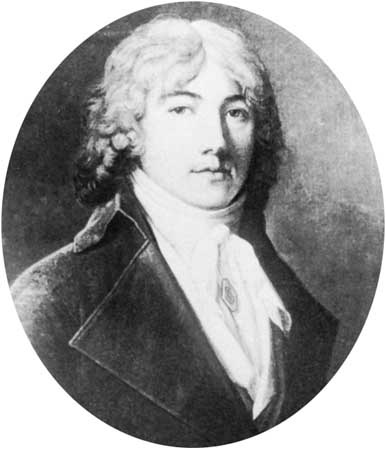Biot, Jean-Baptiste
French physicist
born April 21, 1774, Paris, France
died Feb. 3, 1862, Paris
 French physicist who helped formulate the Biot-Savart law, which concerns magnetic fields, and laid the basis for saccharimetry, a useful technique of analyzing sugar solutions.
French physicist who helped formulate the Biot-Savart law, which concerns magnetic fields, and laid the basis for saccharimetry, a useful technique of analyzing sugar solutions.Educated at the École Polytechnique, Biot was appointed professor of mathematics at the University of Beauvais in 1797, became professor of mathematical physics at the Collège de France in 1800, and was elected a member of the French Academy of Sciences in 1803. He accompanied J.-L. Gay-Lussac (Gay-Lussac, Joseph-Louis) in 1804 on the first balloon flight undertaken for scientific purposes. The men showed that the Earth's magnetic field does not vary noticeably with altitude, and they tested upper atmospheric composition. Biot also collaborated with the noted physicist D.F.J. Arago in investigating the refractive properties of gases.
In 1820 he and the physicist Félix Savart discovered that the intensity of the magnetic field set up by a current flowing through a wire is inversely proportional to the distance from the wire. This relationship is now known as the Biot-Savart law and is a fundamental part of modern electromagnetic theory. In 1835, while studying polarized light (light having all its waves in the same plane), Biot found that sugar solutions, among others, rotate the plane of polarization when a polarized light beam passes through. Further research revealed that the angle of rotation is a direct measure of the concentration of the solution. This fact became important in chemical analysis because it provided a simple, nondestructive way of determining sugar concentration. For this work Biot was awarded the Rumford Medal of the Royal Society in 1840.
Among his voluminous writings, the most important work was Traité élémentaire d'astronomie physique (1805; “Elementary Treatise on Physical Astronomy”). He was made a member of the French Academy in 1856.
- Alexander Woollcott
- Alexander Zemlinsky
- Alexandra
- Alexandra Danilova
- Alexandre Alberto da Rocha de Serpa Pinto
- Alexandre Alexeïeff
- Alexandre-Auguste Ledru-Rollin
- Alexandre Beauharnais, Viscount de
- Alexandre Benois
- Alexandre Brongniart
- Alexandre, comte de Lameth
- Alexandre Darracq
- Alexandre Decamps
- Alexandre de Rhodes
- Alexandre Dumas, fils
- Alexandre Dumas, père
- Alexandre, fils Dumas
- Alexandre-Florian-Joseph Colonna, Comte Walewski
- Alexandre-Florian-Joseph Colonna Walewski, Comte
- Alexandre-François Desportes
- Alexandre Grothendieck
- Alexandre Hardy
- Alexandre Herculano
- Alexandre-Jean-Baptiste Le Blond
- Alexandre Lameth, comte de